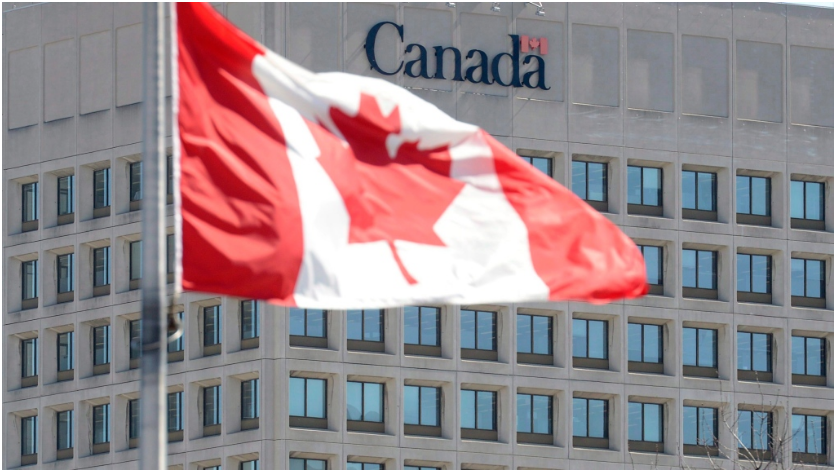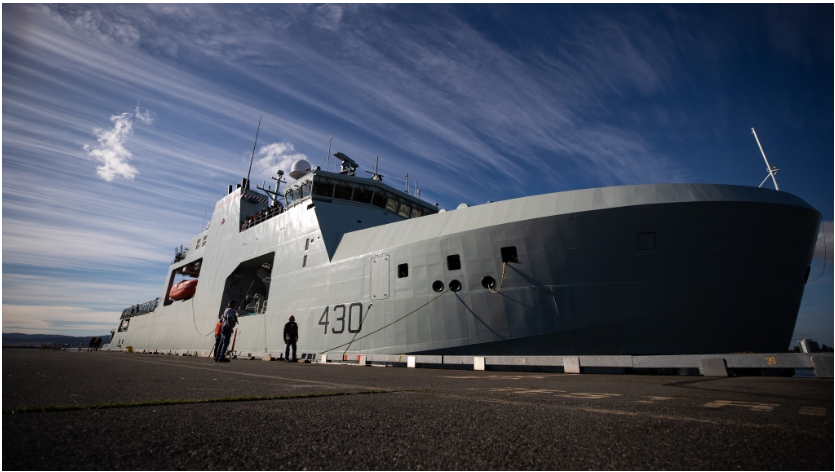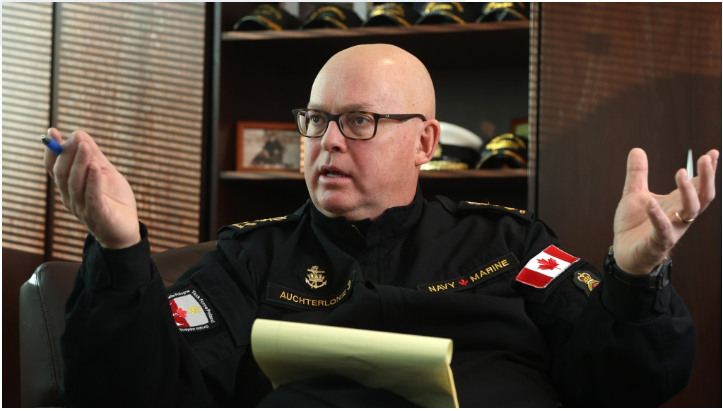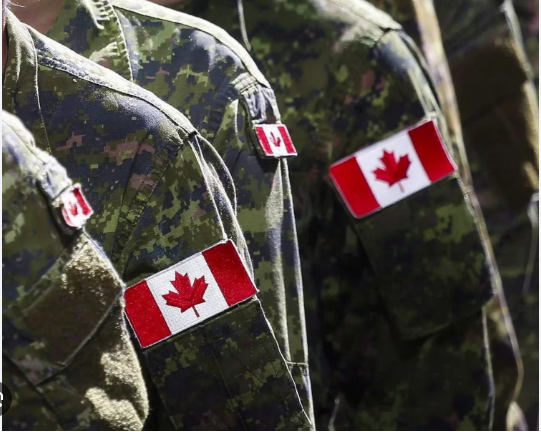
The facade of the headquarters of the Department of National Defence is pictured in Ottawa, on April 3, 2013. THE CANADIAN PRESS/Adrian Wyld
Best CCTV Security Camera in Brampton
OTTAWA – Canada’s military has created a new program to gradually phase out its old housing benefit after hearing feedback from members who were set to lose the payments.
The Armed Forces announced plans in March to create a new housing allowance that is based on salary, rather than where a soldier is posted.
It was estimated the move would make thousands of people eligible for the new allowance while cutting off thousands of others.
The military said that would result in a savings of $30 million a year.
In an update to members, the director general of compensation and benefits says an interim program will phase out the old benefit with decreasing payments until July 2026.
Brig.-Gen. Virginia Tattersall says eligible members will be enrolled automatically and should get a lump-sum payment to cover the summer months sometime in the fall.
The Canadian Armed Forces is rolling out a new housing benefit that a senior commander says will better help troops struggling to find affordable accommodations while saving millions of dollars every year.
The Canadian Forces Housing Differential will supplement the incomes of members who have to live and work in areas of the country with high rental costs.
That includes Canadian Forces Base Comox on Vancouver Island, where some members were recently told they could contact Habitat for Humanity if they were having trouble finding a place to live.
The benefit is set to come into effect on July 1 and will replace an existing allowance called the post living differential, or PLD, that sought to offset the cost of living and working in particularly expensive communities.
Unlike that allowance, whose rates have been frozen since 2009, the new housing benefit will be tied to salary to help those who need it most, said Brig.-Gen. Virginia Tattersall, the military’s director general of compensation and benefits.
The result is that thousands of members who don’t currently qualify for the PLD allowance will start to receive the housing benefit, while thousands of others will see their PLD cash cut off — at a net savings of about $30 million per year.
“This benefit is about us being equitable,” Tattersall said in an interview. “It is truly trying to look after those who need it the most. So hence why it is more the junior ranks that will benefit from this than it is the senior ranks.”
She added the aim is to ensure no member is forced to spend more than between 25 per cent and 35 per cent of their monthly salary on rent. An outside company has been hired to assess average rental prices near bases.
Online forums catering to military personnel are rife with stories and complaints from Armed Forces members about the lack of affordable housing near military bases where they are required to work.
The problem is exacerbated by the cyclical nature of military postings, as troops are routinely forced to relocate from one part of the country to another due to operational demands and career progression.
Younger and more junior members face an especially hard time in certain communities such as Comox, Victoria and Halifax, where housing is extremely limited or expensive.
There is also a critical shortage of housing on bases, with thousands of military members and their families currently on wait-lists while promises to build new accommodations largely stuck in neutral.
To ease the problem, the local base commander at CFB Esquimalt near Victoria has started letting new sailors live in their training quarters for months after their initial training is finished.
The focus on housing rather than overall cost-of-living reflects the main cost disparity of living in different parts of the country, Tattersall said, unlike in the past when cost variances were far greater.
“Cost of living per se is relatively equal across the country, the one thing that does stand out is that cost of housing, or that affordability of housing,” she said.
“And so that’s why we’ve focused the benefit in on that issue, because that more seems to be the real challenge for our members.”
Tying the new housing benefit to salary will ensure those who are really struggling get the help they need while cutting down on spending, she added. Armed Forces members living in military housing will also not qualify.
The new housing benefit will cost about $150 million per year, compared to $180 million for the PLD allowance.
“And so part of finding that sweet spot in terms of something that looked after members was also ensuring that we brought ourselves back within the envelope of funding that had been authorized,” she said.
The military estimates that about 28,000 Armed Forces members will qualify for the new housing benefit, which represents about 6,300 more than currently receive the PLD.
However, about 7,700 members who have been receiving the existing allowance will be cut off. While the military says most of those already live in military housing or have higher salaries, the move is likely to spark complaints.
Best CCTV Camera in Brampton

The Royal Canadian Navy’s Arctic and Offshore Patrol Ship HMCS Harry DeWolf docks in Victoria after arriving from Vancouver on Sunday, Oct. 3, 2021. THE CANADIAN PRESS/Darryl Dyck
Home CCTV Camera in Brampton
Canadian taxpayers will foot the bill for repairs to the engines on at least two of the Royal Canadian Navy’s brand-new Arctic patrol vessels because the one-year warranty on those vessels has expired.
Defence Department deputy minister Bill Matthews delivered the news during an appearance before the House of Commons public accounts committee on Monday, shortly before the department reported the repairs will end up taking longer than expected.
“The warranty on the AOPS (Arctic offshore patrol ships) is one year after in-service,” Matthews said. “You have two vessels that have exceeded that one-year point. So reading the warranty purely, that would be on National Defence to pay.”
The revelation represents yet another blow to Canada’s troubled military procurement system, which has struggled to deliver functional new equipment to the Canadian Armed Forces without delays or cost overruns.
The Canadian Press reported last week that Ottawa is also on the hook for repairs to the Royal Canadian Air Force’s Cyclone helicopters, one of which crashed off the coast of Greece in 2020, killing six Armed Forces members.
The government plans to buy eight Arctic patrol vessels from Halifax-based Irving Shipbuilding, including six for the Navy and two for the Canadian Coast Guard. Ottawa is paying $5 billion for the naval vessels and $1.6 billion for the coast guard ships.
Three of the vessels have been delivered to the military, starting with HMCS Harry DeWolf in July 2020, which Navy commanders hailed as the start of a new era. HMCS Margaret Brooke was delivered in July 2021 and HMCS Max Bernays in September 2022.
Matthews told the committee that it will be up to Irving to fix the problems on HMCS Max Bernays and the others as they are still under warranty.
He also appeared to leave open the possibility of trying to recoup some of the repair costs from Irving, saying he wanted to take a close look at the results of a technical investigation into the problems afflicting the vessels.
“If you read the warranty to the letter, it’s in our hands,” he said. “But I want to take a look at the technical report.”
The latest problems on the Arctic patrol vessels emerged in August, when HMCS Harry DeWolf was forced to cancel a planned training exercise in the Far North and return home to Halifax due to a generator failure.
Preliminary reports eventually identified issues with the engine cooling system as well as the drinking water system on the vessels, whose costs have skyrocketed since then-prime minister Stephen Harper first announced plans to build the fleet in 2007.
Defence Department spokeswoman Jessica Lamirande said the full investigation, which was launched in September and completed last month, confirmed the root causes of the problem with the engine cooling system.
Officials are now working to fix the problems, which will include flushing the four main diesel generators that provide the ships with power and propulsion after the engines have been repaired.
Lamirande did not say how much the repairs will cost, but did indicated that it was unlikely the Defence Department would meet its original timeline of having HMCS Harry DeWolf and HMCS Margaret Brooke back in the water by April.
Repairs are also being made to the system used to deliver drinking water, which was found to have elevated levels of lead due to the alloys used on certain fittings and valves. The problem meant crew members had to be issued bottled water.
Negotiations are underway between the government and Irving over the costs of those repairs, Lamirande said.
Matthews was appearing before the public accounts committee as it was conducting hearings into an auditor general’s report from last year that found significant gaps in Canada’s ability to monitor and police its Arctic waters.
Members of Parliament repeatedly pushed Matthews for more details on reports that China had deployed surveillance buoys in Canada’s Arctic waters. He declined to answer for reasons of national security.
Deputy auditor general Andrew Hayes told MPs that the Defence Department did not tell his staff about the buoys, whose existence became public only weeks after a suspected Chinese spy balloon flew through Canadian airspace.
Hayes would not comment on the balloon or buoys, but did reiterate the urgent need to close the gaps in Canada’s Arctic surveillance capabilities.
Cheap CCTV Camera in Brampton

Commander of the Canadian Joint Operations Command (CJOC) Vice-Admiral Bob Auchterlonie speaks during an interview in Ottawa on Dec. 14, 2022. THE CANADIAN PRESS/ Patrick Doyle
Home CCTV Camera in Brampton
The Canadian Armed Forces is shrinking its footprint in Iraq and the Middle East to free up troops for deployment to Europe and elsewhere, as a personnel shortage and growing demands at home and abroad test the military’s limits.
In an interview with The Canadian Press, Vice-Admiral Bob Auchterlonie, head of the Canadian Joint Operations Command that runs all Canadian military operations at home and abroad, said the Armed Forces will continue to have a presence in the Middle East.
That includes maintaining a logistical hub in Kuwait and small training missions in Jordan, Lebanon and Iraq.
Auchterlonie said the Middle East is one of the few areas where he has flexibility as he juggles Canada’s numerous other commitments with the military’s limited resources — especially people.
“Given the importance of the conflict in Ukraine, obviously we’re going continue to support that,” he said. “The commitments to NATO — obviously, we’re going to continue to support that. And with the increase in the Indo-Pacific, there’s not a lot of room left to reduce.”
Thousands of Canadian troops have deployed to the Middle East since 2014, when Canada joined its allies in declaring war on the Islamic State of Iraq and the Levant, which at the time had captured large swaths of Iraq and Syria.
Known as Operation Impact, Canada’s contribution included fighter jets, transport and surveillance aircraft, special forces soldiers and helicopters, a medical hospital and hundreds of military trainers working with Iraqi, Jordanian and Lebanese soldiers.
At the operation’s height, about 800 Canadian troops were deployed to the region, making it Canada’s largest mission since Afghanistan.
The Canadian Armed Forces started shrinking its presence following ISIL’s defeat in Iraq in 2017.
The decline was further hastened by the COVID-19 pandemic, growing tensions with Iran and political turmoil in Baghdad before Russia’s invasion of Ukraine put European security front and centre, sparking new demands for the Canadian military.
Auchterlonie revealed that the Liberal government has set a cap of 450 Armed Forces members for Op Impact, though only about 250 are currently involved in the mission. Even that number is set to decline further to meet other demands.
“We’re looking at scoping that down to allow … specifically the Army more folks to move elsewhere,” he said. “So we’ve reduced that mission in terms of numbers, and I’ve reduced the skill sets and requirements of people deployed to free up other people in the Army.”
In an interview in December, Canadian Army commander Lt.-Gen. Joe Paul said his force was being squeezed by more demands at home and abroad, especially in Europe, even as the number of soldiers available for such missions is shrinking.
Paul told The Canadian Press that the Army shrunk by 1,200 soldiers last year as departures outpaced recruiting Γüá– and that it could lose hundreds more unless the situation changes. The whole military is short about 10,000 members, meaning one in 10 positions is vacant.
This shortage comes as Canada has doubled the number of military trainers working with Ukrainian counterparts from 200 to 400 following Russia’s invasion. The Army is also poised to reinforce a Canadian-led NATO battle group in Latvia, which will require hundreds more troops.
All of that coincides with the military being asked to respond more and more natural disasters at home.
To illustrate the impact on Canadian troops, Auchterlonie pointed to one unit in August 2021 that was helping with flood relief efforts in the Yukon when it was sent to Kuwait to help with the Afghanistan evacuation — and then got deployed to Ukraine to train local forces.
There are also the military’s challenges in terms of equipment, due to its limited number of old ships and aircraft and gaps such as a lack of anti-air defence capability.
And the government recently announced a plan to increase the Armed Forces’ presence in the Indo-Pacific region.
“So demand is up … and trying to meet that is really challenging,” Auchterlonie said. “Therefore, in missions that I have scope to reduce, I have.”
The Canadian Armed Forces is under fire for its plan to cut thousands of troops off a cost-of-living allowance without much notice.
The military announced last week that about 7,700 Armed Forces members will no longer receive the top-up starting in July, when it will be replaced by a new housing benefit that commanders say will better assist those who need the most help.
Social media and online forums dedicated to military personnel have been crackling with dissatisfaction over the plan, including the abbreviated timeline. Some are also unhappy with a new 10 per cent pay increase over four years, retroactive to 2021.
Experts say the lack of notice speaks to larger problems around how the military treats its people, which they worry is sparking anger and frustration at a time when the Canadian Armed Forces is struggling with a recruitment and retention crisis.
“We’re pissing people off,” said retired lieutenant-general Guy Thibault, who previously served as vice-chief of the defence staff. “And this may be the final straw that pisses them off. It’s not really about compensation. It’s just that they’re not feeling valued.”
The decision to replace the military’s existing cost-of-living allowance with a new housing benefit follows a 14-year battle between the Department of National Defence and Treasury Board, the central department that controls federal spending.
Established in 2000 as a way to compensate members for the added costs of having to live and work in certain communities, the allowance rates were frozen in 2009 as defence and treasury officials fought over the program’s cost and parameters.
Canadian Forces College professor Alan Okros said members were led to believe that that when a deal was finally struck, it would finally raise rates and expand eligibility as troops living in some parts of the country did not qualify.
“There was a generalized tone and expectation of, ‘Look, we’re working on it. … We’re going to sort it all out,”‘ said Okros, who specializes in military personnel and culture. “There was this generalized expectation of, ‘It’s going to be much better.”‘
Such expectations were predicated on the belief that the government would put more money into the pot to compensate troops for their service, particularly given that the Armed Forces is currently dealing with a recruitment and retention crisis.
That didn’t happen. Instead, the military says the new housing benefit is both more equitable and more efficient than the previous allowance as it is tied to salary, includes more geographic locations, and will cost about $30 million less per year.
Charlotte Duval-Lantoine, an expert on military culture at the Canadian Global Affairs Institute think tank, said some members who were receiving the cost-of-living allowance would have accounted for that money in their budgetary planning.
“This is the distinction that frustrates people the most, because some of them will not be eligible in this (new benefit) even though they’re struggling in terms of their cost of living,” she said. “There’s going to be a readjustment for people.”
The fact it is being taken away in a matter of months without any previous consultation or warning speaks to problems with how the chain of command treats and communicates with its troops, she added.
“It’s kind of emblematic of the way that we talk about personnel policy and how the military communicates (with) its personnel,” she said. “It’s always big announcements. And then we don’t hear about it for years on end. Then there’s a new announcement.”
The housing benefit has also come under scrutiny, with concerns about the actual rates being based on the cost of renting a two-bedroom apartment without consideration for family size. There’s also a seven-year cap on receiving the benefit in one location.
Members are also complaining that the new pay increase does not keep up with inflation.
The new benefit and pay increase have nonetheless sparked a bit of a debate over compensation for military personnel, with some arguing troops are relatively well paid and most Canadians are facing some sort of economic pressure.
“We’ve got a pretty well-paid force, not only against other allied forces or volunteer forces, but against the general population,” said Thibault, who is now chair of the Conference of Defence Associations Institute think tank.
“In terms of where we’re going with the economy, it’s not unique to the Canadian Forces. It’s a societal problem right now with interest rates, with inflation, with the economy, with housing.”
Rather, experts feel the reaction is more symptomatic of bigger problems as the Armed Forces faces growing demands while struggling with a shortage of personnel, old equipment, and efforts to radically overhaul its culture.
“Our government and Canadians, they seem to care for the Canadian Forces,” Thibault said. “But not care enough about them to make it a priority, or to address some of these longstanding problems.”

